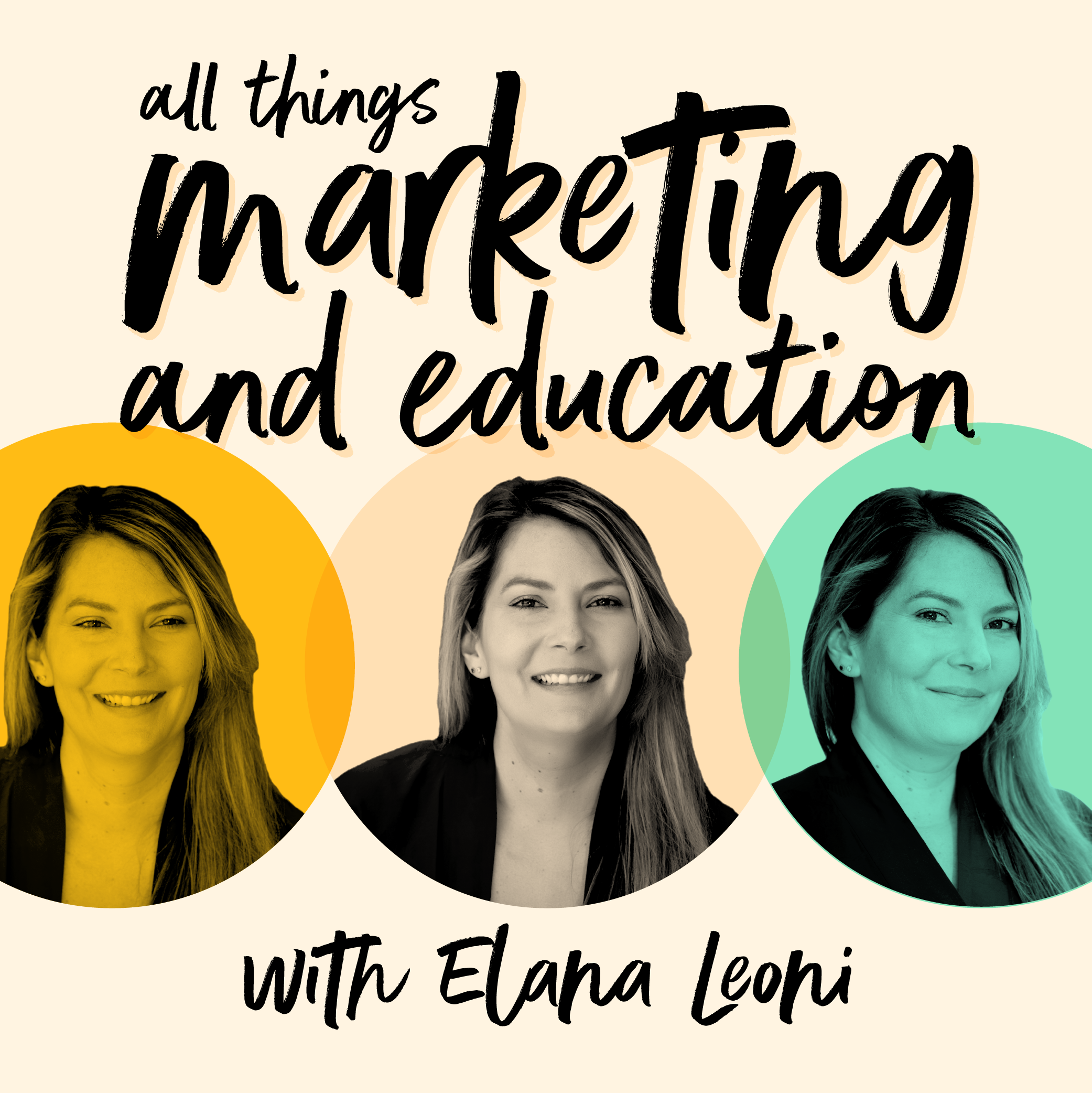In this episode, we sit down with Adam Bellow, co-founder and CEO of Breakout EDU, and an EdTech entrepreneur and technologist. Adam gives his best advice for educators who are considering transitioning into EdTech, provides insight on how EdTech brands can successfully communicate with their educator audience and discusses some of his philosophies on how to create genuine solutions for classroom problems.
Advice for Educators Considering a Career in EdTech
For any educator considering a career in EdTech, Adam says “I think it’s more about that journey piece than saying ‘oh I want to go build something.’ It’s literally just building things from need and trying to fulfill your own needs. I think creative purpose, and keeping yourself passionate and excited. And as teachers, we use lifelong learning all the time, and I think for me it’s also a love to share. I feel like that’s key for anyone. It’s like take something you’re interested in and passionate about, and be on fire about it. Good things seem to happen when those are in the mix.”
Since many people don’t get to experience the classroom first-hand, Adam notes that educators may have a leg up if interested in EdTech. “People might say, from a business standpoint, [that success in EdTech] is knowing how to talk to teachers,” Adam says. “I don’t think that that’s it. I think it’s really knowing and understanding how difficult it is to actually be a boot on the ground doing that job. Having those days where like, the technology wouldn't work, or all of a sudden, we got this new program and I had to get training for this and that and the other thing.” Adam says that teachers have a leg up because they “know how important time and space are, and how difficult the teacher’s job really is.” And in return, those teachers might be able to create more effective products for the classroom space.
Adam says there is one central question to every good EdTech product: “what do students need most?” Instead of building out of need, Adam says some EdTech brands “build for flashiness, like a lot of pitches I’m sure you’ve heard from an EdTech company. There's an assumption of what is needed in the classroom without ever verifying that it's a real need.”
So for Adam, the key to a good EdTech founder is “being able to critically [ask yourself]: will this actually matter to those kids? Will it make the product better? Will it make the experience better? Or is it just something that we’ve done for the sake of doing it?” With their experience in the classroom, Adam says teachers are uniquely equipped to ask those questions and use that critical eye.
Successfully Communicating with Educators as an Edtech Brand
Adam reminds us that EdTech has three main customers that brands have to keep in mind while both creating and marketing their products, all of whom have different needs and challenges:
Schools:
EdTech brands have to prove that their product is a valid form of learning that the school should support financially. Adam said that “it’s sometimes the most difficult because they’re the most withdrawn from the actual experience.”Teachers:
Teachers have to be convinced that “it’s well worth all of the time and investment to get this up and running in your classroom.” A teacher’s day is already packed, and it will take time for them to consider it, learn it, and implement it on a learning curve. Adam said that when talking to teachers about products, “we take very seriously the fact that we’re brought into classrooms. It’s a sacred space, and it's a very time-crunched space.”Students:
Adam said that for students, “we want to make this fun, we want to make it engaging, we want to make it educationally valid, and don’t waste their time.”
As an EdTech brand, Adam says that when both creating and marketing an EdTech product, “you need to provide value.” So when communicating through brands, Adam explains that brands have to emphasize that value when marketing.
“I do think that talking about the value you’ll provide to that teacher and to their students is super important. And not like there’s a fine line between having fun with it and being denigrating. And I think some brands go to this very cliché, like silly teacher memes, but I think that they should be leaning into the value they provide to teachers,” Adam says.
Social proof in a tangible way to express your brand's value. Adam reflects, “This is something that we’ve been very, very fortunate with Breakout is that, without being told to, people post pictures all day long on social media of them doing Breakout with their kids. And sometimes you do it better than others, but engaging with those folks who went to the trouble of basically providing you with a commercial and sharing your product with the world through their own account is always fun.”
Adam says that, in order to have a successful marketing product, “Keep value first. Just help as much as possible. And sometimes your product may not solve all of their problems. The world of education is full of amazing voices. Your job should be to elevate voices as well. And you can elevate voices that are related to the things you're passionate about.”
Creating Unique Solutions to Real Problems
Breakout EDU started as an experience, but Adam says their perspective shifted when they realized the power of the tool. “The reality is within a few months of starting, we realized that the byproduct of that experience, the four Cs — all of those skills that are almost impossible to teach, and certainly harder to capture organically,” he said. “If I said we’re going to work on our collaboration right now, I’ve already framed this wrong. But if I have a student that’s like, ‘Hey we’re going to solve this problem and there’s this locked computer screen and you have to get into it by solving these problems and working with your neighbors. Now it’s like ‘OK, well clearly, we’re going to work on all of those four C skills, but they haven’t been told directly to do so.”
Adam reminds us, “It's really about giving people value. We want kids to have fun and there’s a certain amount of fun that I think is essential. But if you can understand the fact that learning and fun are not dichotomous, that’s really special and important.”
A good EdTech product can also be used within the SAMR model. “You want to do something more than just replication. With our students, we really want to get them to read up on what that experience is like,” Adam says. “Doing the actual physical experience, whether it be the kit-based games or the digital games, we’re hoping that students can realize that technology can be used to build something completely different. It allows them to be the creator.”
Technology cannot be siloed in the learning experience. Adam recommends to not "frame an EdTech product as ‘a technology day’ or ‘technology lesson.’ Don't focus on the product itself. It’s all about how the students can use tools to make something that goes far beyond a simple lesson."
"Chris Lehmann [Science Leadership Academy Principal] said once about technology, ‘It needs to be ubiquitous, necessary, and invisible.’ It's not about the technology. Most students have access to devices, some multiple devices. And as devices get more and more impressive, the kids are going to do more things with these devices on their own. It’s not about the flashy toy. It’s more about what we can get these students to create."
Note: This interview was originally recorded on August 27, 2021, as part of the All Things Education and Marketing podcast hosted by Elana Leoni.
Take a look at the full transcript of Adam’s podcast episode.
Resources Mentioned in this Episode:
About Chris Lehmann and his quote about EdTech being like oxygen (@chrislehmann)
Edutopia Tech Integration Model (more SAMR)
Val Kilmer’s Documentary (Adam’s recommended watching)
Adam Twitter: @adambellow
Breakout EDU Twitter: @breakoutedu
Elana Leoni, Host
Elana Leoni has dedicated the majority of her career to improving K-12 education. Prior to founding LCG, she spent eight years leading the marketing and community strategy for the George Lucas Educational Foundation where she grew Edutopia’s social media presence exponentially to reach over 20 million education change-makers every month.
Adam Bellow, Guest
Adam is a dedicated educational technologist, father of two young boys. He is the CEO and Co-Founder of Breakout EDU, the immersive gaming platform that enables teachers and students to transform classrooms into places of discovery and inquiry-based learning. Previously, he served as a Presidential Innovation Fellow for the Obama White House, created several edtech learning platforms including eduTecher and eduClipper. Adam has written numerous books about educational technology and speaks internationally on the subject of education and technology.
About Breakout EDU
Breakout Edu is a box with padlocks on it, each lock with a different academic purpose. Students work together in small groups to collaboratively unlock the box. Inside of the box, there are discussion cards based on the 4 C’s. About 2 years ago, Breakout also launched a digital platform with games, a game design school and a series of course materials that allows the students to become creators. Adam expressed a huge value for student creation and student ownership as a higher level proof of learning, using what they learned in class to do something that’s actually fun.
About All Things Marketing and Education
What if marketing was judged solely by the level of value it brings to its audience? Welcome to All Things Marketing and Education, a podcast that lives at the intersection of marketing and you guessed it, education. Each week, Elana Leoni, CEO of Leoni Consulting Group, highlights innovative social media marketing, community-building, and content marketing strategies that can significantly increase brand awareness, engagement, and revenue.
Rate, Like, and Subscribe
Let us know what you thought about this episode by rating and reviewing our podcast. Click here, scroll to the bottom, tap to rate with five stars, and select “Write a Review.” Then be sure to let us know what you loved most about the episode! Also, if you haven’t done so already, subscribe to the podcast to be notified when we have more content to share with you.






